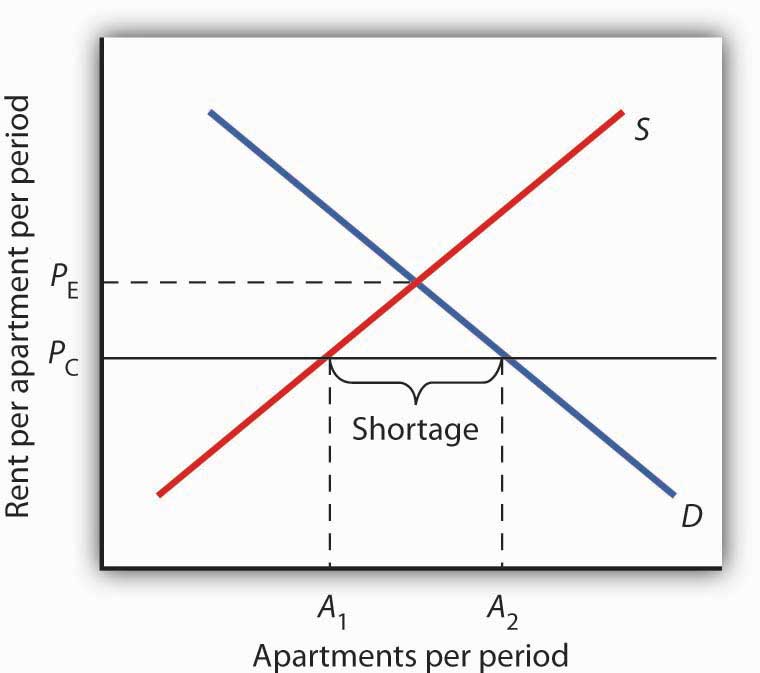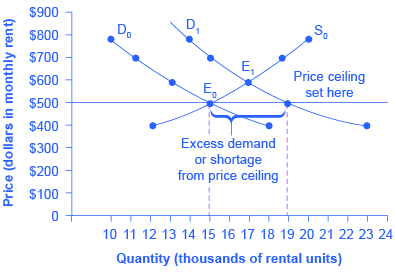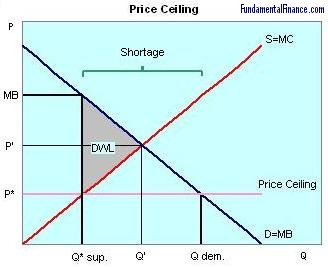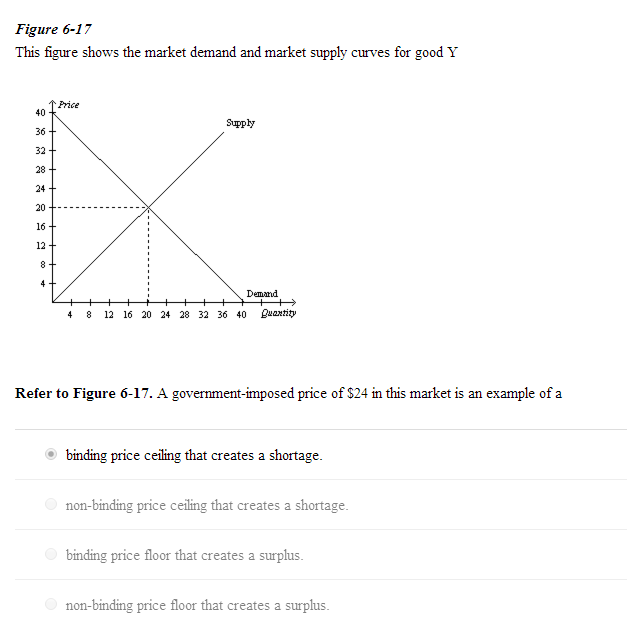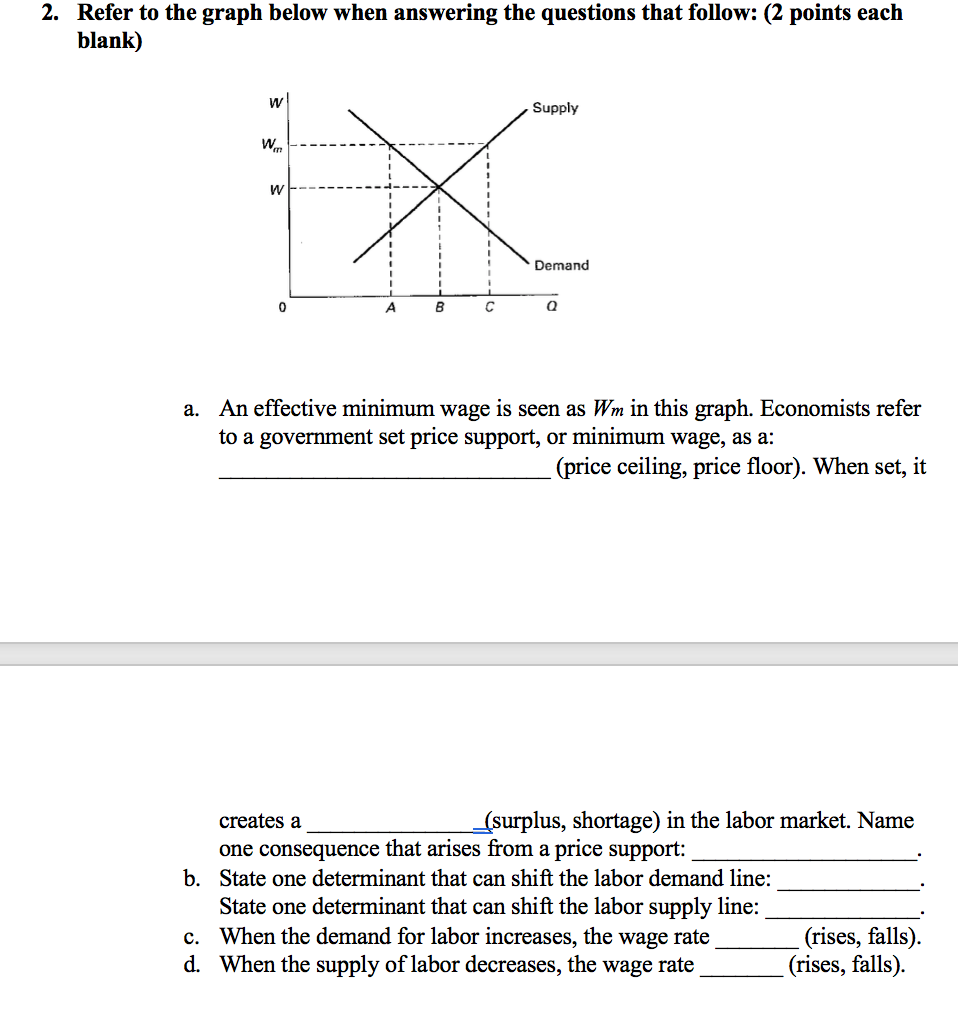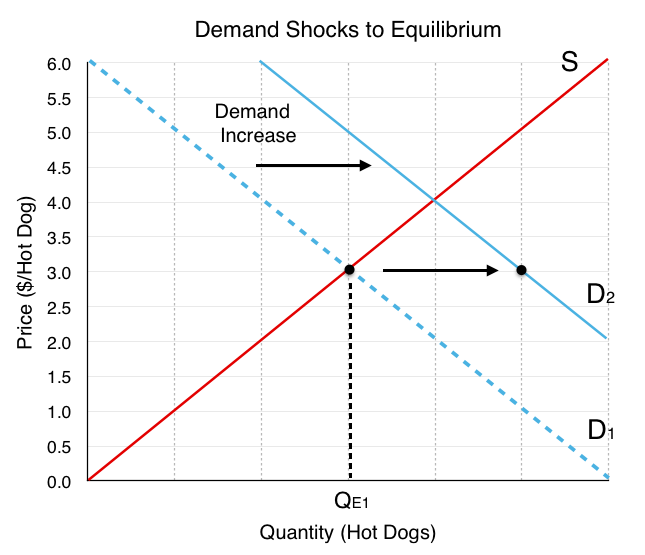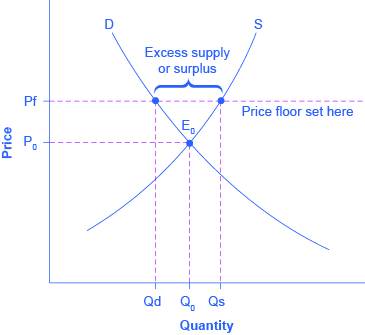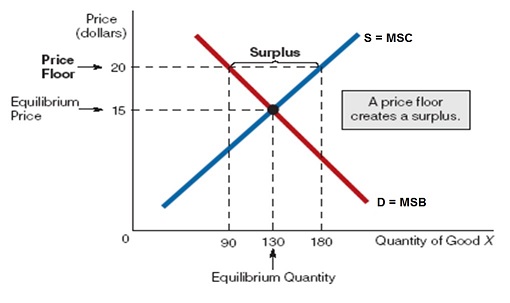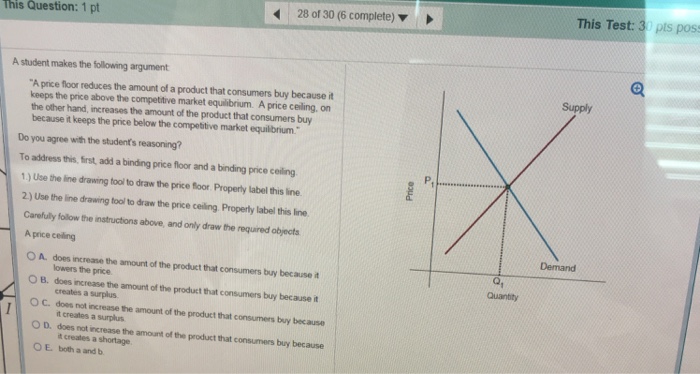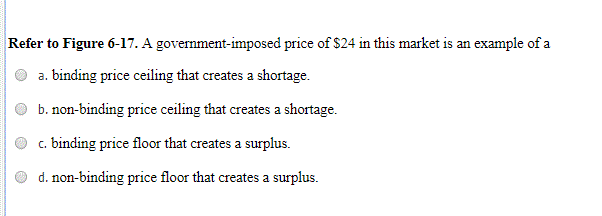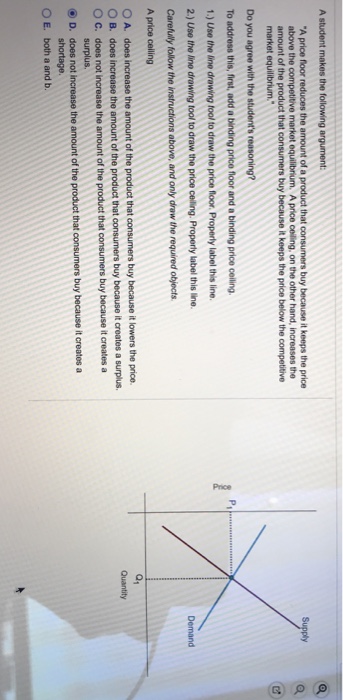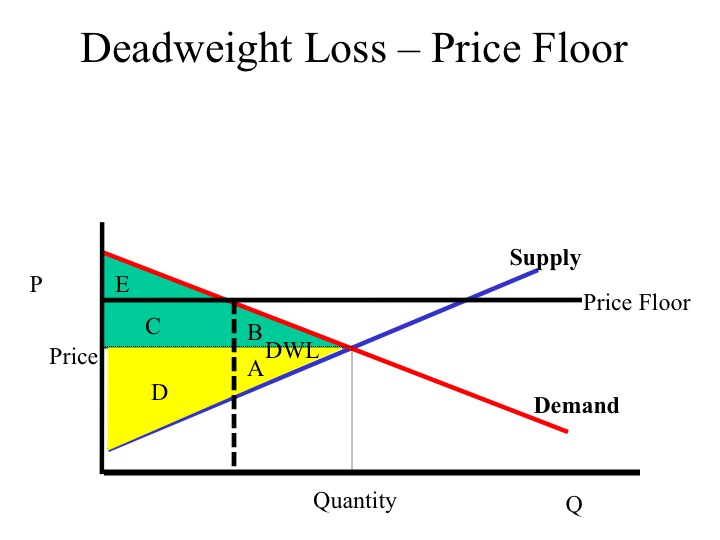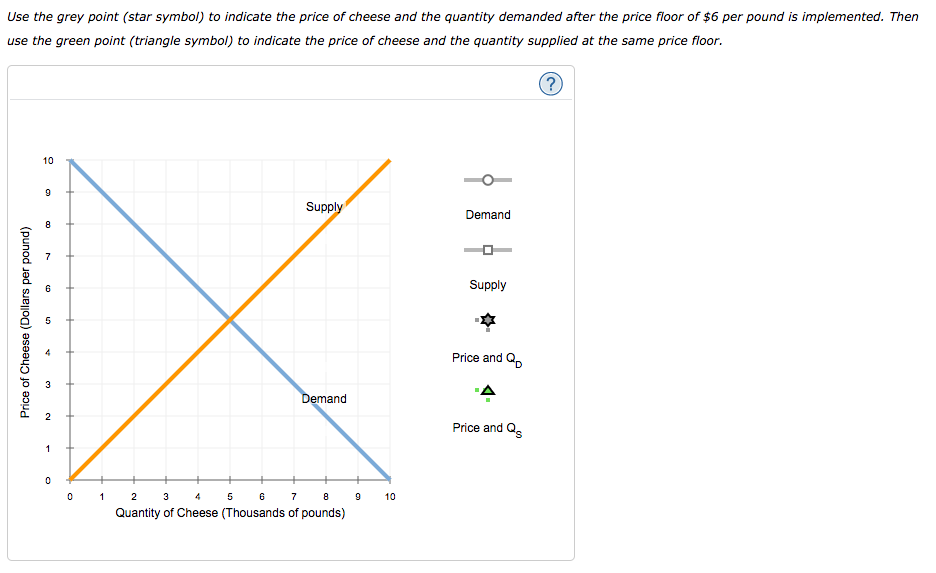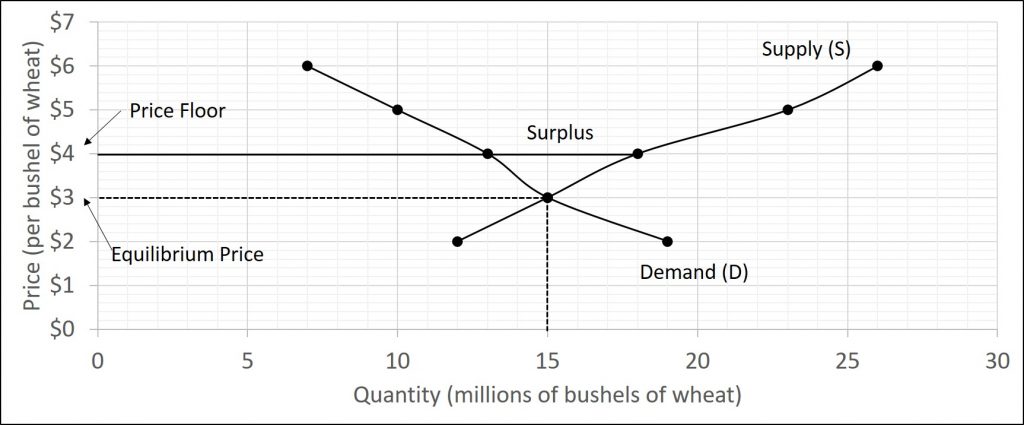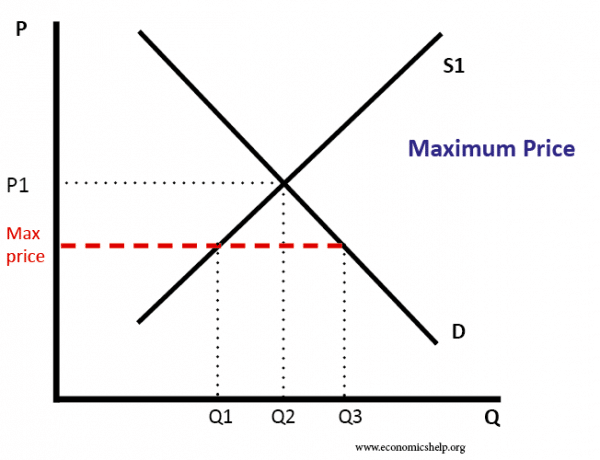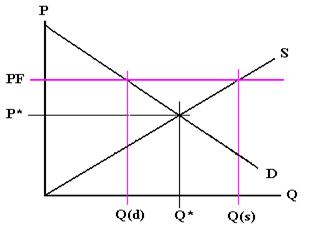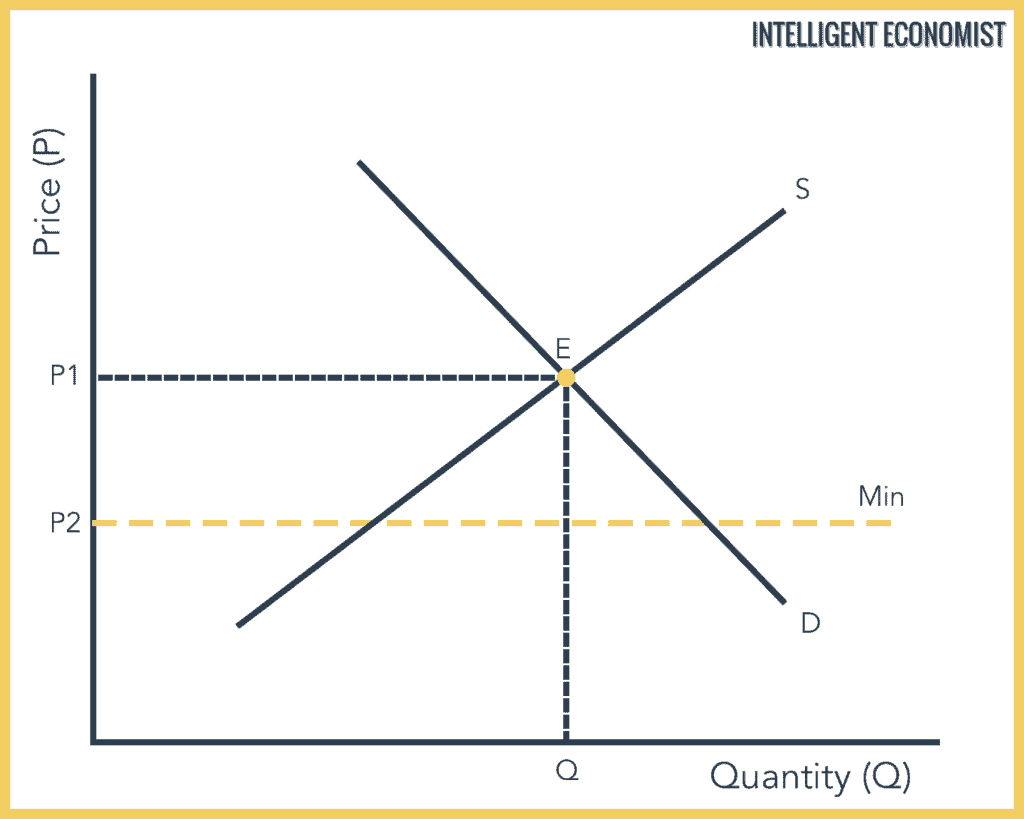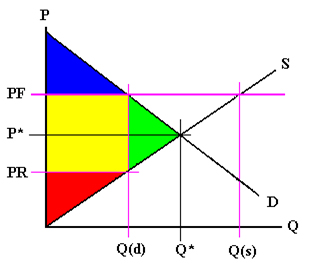The equilibrium price commonly called the market price is the price where economic forces such as supply and demand are balanced and in the absence of external.
Price floor generates surplus or shortage.
Demand curves are highly valuable in measuring consumer surplus in terms of the market as a whole.
Because the graphs for demand and supply curves both have price on the vertical axis and quantity on the horizontal axis the demand curve and supply curve for a particular good or service can appear on.
And very low prices naturally.
However price floor has some adverse effects on the market.
Governments put in place price floors in markets with inelastic demand inelastic demand inelastic demand is when the buyer s demand does not change as much as the price changes.
A price floor is the lowest legal price a commodity can be sold at.
The most common price floor is the minimum wage the minimum price that can be payed for labor.
Due to the law of diminishing marginal utility the demand curve is downward sloping.
Government set price floor when it believes that the producers are receiving unfair amount.
When price increases by 20 and demand decreases by only 1 demand is said to be inelastic.
Recall that the law of demand says that as price decreases consumers demand a higher quantity.
A price floor must be higher than the equilibrium price in order to be effective.
Price floors are used by the government to prevent prices from being too low.
Similarly the law of supply says that when price decreases producers supply a lower quantity.
A demand curve on a demand supply graph depicts the relationship between the price of a product and the quantity of the product demanded at that price.
If price floor is less than market equilibrium price then it has no impact on the economy.




